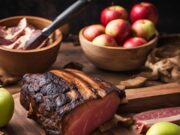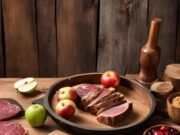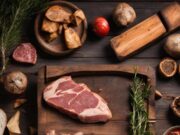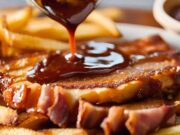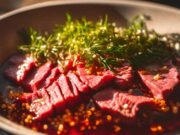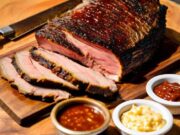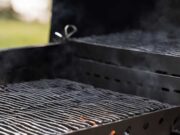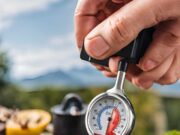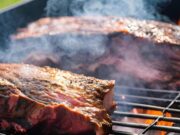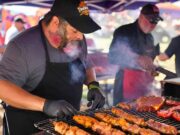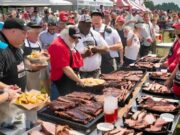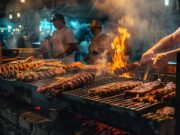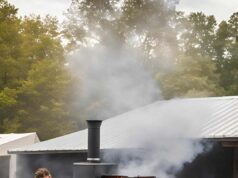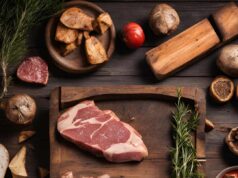Grilling is an art that has the potential to elevate any meal, but not all grilling methods produce the same results. Understanding the distinction between direct and indirect grilling is essential for mastering the grill and achieving optimal flavors.
This guide examines the nuances of both methods, detailing when to utilize each one and the best practices for setting up your grill. Whether you are a seasoned professional or a curious beginner, this information will assist you in maximizing your grilling experience.
Key Takeaways:
- Direct grilling is best for quick cooking thin cuts of meat and vegetables, while indirect grilling is ideal for slow cooking thicker cuts and delicate foods.
- Properly setting up your grill is crucial for achieving the desired results with both direct and indirect grilling methods.
- Understanding the differences between direct and indirect grilling, as well as when and how to use each method, will help you become a master of the grill and elevate your cooking game.
Understanding Direct and Indirect Grilling
Direct grilling and indirect grilling are two fundamental methods utilized in BBQ that significantly influence the cooking process and the final flavor of your food. Direct grilling entails exposing food to direct heat, whether from charcoal, a gas grill, or pellet cookers, resulting in a quick cooking time and a deliciously charred exterior.
In contrast, indirect grilling involves positioning food away from the direct heat source, allowing for slower cooking and deeper flavor penetration, which is particularly effective for larger cuts like brisket and pork ribs.
Each method presents its unique advantages and ideal applications, making them essential skills for any aspiring grill master.
Definitions and Key Differences
Direct grilling involves cooking food directly over a heat source, while indirect grilling utilizes the grill’s ambient temperature, cooking food adjacent to the heat for a slower preparation.
You may find direct grilling preferable for quicker cooking methods, as it often results in a delightful char and robust flavors. This technique is particularly well-suited for items such as steaks, burgers, and vegetables that thrive on a quick sear.
On the other hand, indirect grilling takes advantage of the convective heat of the grill, allowing larger cuts of meat, such as whole chickens or roasts, to cook evenly over an extended period without the risk of burning.
With direct grilling, you have greater control over temperatures, relying on high heat for rapid cooking. In contrast, indirect grilling requires a more strategic approach, focusing on maintaining a lower, consistent heat source. This distinction not only affects cooking times but also has a significant impact on the texture and juiciness of the food being prepared.
When to Use Direct Grilling
Direct grilling is most effective for foods that thrive under high heat and brief cooking times. This technique is particularly well-suited for items such as steaks, pork chops, chicken wings, and vegetables that can quickly caramelize to achieve that desirable char.
By utilizing either a gas grill or charcoal, you can create an impressive sear that enhances flavors through the Maillard reaction, which is crucial for crafting delicious BBQ dishes. Foods like New York steak and burgers, which benefit from quick cooking to maintain optimal juiciness and texture, are ideal candidates for this grilling method.
Understanding when to employ direct grilling can significantly enhance your outdoor cooking experience.
Best Practices and Ideal Foods
To achieve optimal results with direct grilling, it is important to focus on using high-quality cuts of meat, such as steaks, chicken wings, and vegetables that perform well at high temperatures.
The selection of food is as crucial as the grilling technique itself; choose cuts that are well-marbled for enhanced flavor and tenderness. Before grilling, it is advisable to marinate or season your ingredients to infuse them with flavor and ensure a juicy outcome. Simple oil-based marinades can enhance the natural flavors of meats and vegetables, while dry rubs combining a variety of spices can create an appealing crust.
Precise timing is essential, so keep a close eye on the grill to achieve that perfect sear without overcooking. Utilizing a meat thermometer can help you monitor internal temperatures, ensuring that your grilled dishes are both safe to eat and deliciously moist.
When to Use Indirect Grilling
Indirect grilling is the preferred method for cooking larger cuts of meat, such as brisket, tri-tip roast, and pork ribs. This technique provides a more controlled cooking environment that promotes even cooking and enhances the flavor derived from smoke and wood.
It is especially effective when using a pellet cooker or charcoal grill, as it employs indirect heat to gradually penetrate the meat, resulting in tender, juicy dishes packed with flavor. Furthermore, indirect grilling is ideal for items that require longer cooking times and benefit from a low and slow approach, including whole chickens and certain vegetables.
Best Practices and Ideal Foods
When utilizing indirect grilling, it is essential to select cuts of meat that benefit from slow cooking, such as brisket, pork ribs, and whole chickens, which can develop rich flavors over time.
To enhance the flavor and tenderness of these cuts, begin with proper food preparation. Marinating or dry rubbing the meat will bring out its natural taste while helping to retain moisture during the cooking process.
Setting up the grill for indirect heat involves turning on only one side of the burners or placing coals on one side if using charcoal. This method allows the meat to cook evenly without direct exposure to the flames.
Maintaining a consistent temperature, generally between 225°F to 275°F, is crucial for thorough cooking. Additionally, vegetables and fish are ideal for this technique, as they can absorb smoke from wood chips, further enhancing their flavors.
Experimenting with different types of wood, such as hickory or apple, can introduce unique taste dimensions to your grilled offerings.
Setting Up Your Grill
Setting up your grill correctly is essential for successful BBQ, whether you choose direct grilling or indirect grilling, as each method demands a distinct approach to heat management and food placement.
For direct grilling, ensure you preheat your gas grill or charcoal until the flames are hot, which allows for even heat distribution and achieves the best sear on your steaks or chicken wings.
Conversely, when preparing for indirect grilling, it is important to create zones of heat by positioning coals to one side of the grill or utilizing a two-zone setup on a gas grill. This method enables the meat to cook in the area of indirect heat while absorbing flavorful smoke from wood chips or pellets.
Mastering these setup techniques can significantly enhance your outdoor cooking experience.
How to Prepare for Each Method
Preparing your grill for both direct and indirect grilling requires a solid understanding of each method’s specific needs, including heat management and food preparation techniques. This knowledge will enable you to create delicious meals with precision.
Begin by thoroughly cleaning the grates and surrounding surfaces to ensure that any unwanted residues do not interfere with the flavor of your food. Once the grill is clean, it is essential to preheat it to the desired temperature, recognizing that different grilling techniques may require distinct settings.
For direct grilling, fully open the air vents to achieve high heat. In contrast, when preparing for indirect grilling, adjusting the vents will help maintain a more stable temperature. Additionally, consider using marinades or brines to enhance the flavor and moisture of your food. These techniques not only infuse your dishes with rich tastes but also promote tenderness.
By understanding and mastering these steps, you will significantly elevate your grilling expertise.
Frequently Asked Questions
What is the difference between direct and indirect grilling?
Direct grilling involves cooking food directly over the heat source, while indirect grilling involves placing food next to, but not directly over, the heat source.
When should I use direct grilling?
Direct grilling is best for quick-cooking foods, such as burgers, steaks, and vegetables. It is also ideal for foods that need a crispy texture, like chicken wings or fish fillets.
When should I use indirect grilling?
Indirect grilling is perfect for larger cuts of meat or foods that require longer cooking times. It is also great for smoking foods, as it allows for a slower and more even cooking process.
What are the benefits of direct grilling?
Direct grilling allows for high heat cooking, which creates a delicious char and sear on meats and vegetables. It also cooks food quickly, making it a great option for busy weeknights.
What are the benefits of indirect grilling?
Indirect grilling allows for more gentle and even cooking, which is ideal for thicker cuts of meat. It also gives you more control over the cooking process, allowing for a wider range of cooking techniques.
Can I use a combination of direct and indirect grilling in one cooking session?
Absolutely! Many recipes call for a combination of both direct and indirect grilling, such as searing a steak over direct heat and then moving it to indirect heat to finish cooking. Experiment with different techniques to find the best method for your desired dish.



